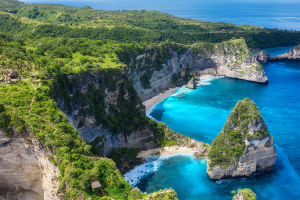Tidal flats are unique ecosystems located between the high tide and low tide levels of coastal areas. They are characterized by the convergence of marine and terrestrial environments and are composed of various materials such as mud, sand, and rocks.
Tidal flats can be divided into three types based on the materials they are composed of-rocky beaches, sandy beaches, and mudflats-and three types based on the tide level, width, and slope-high tidal beach, middle tidal beach, and low tidal beach.
The formation of tidal flats can be attributed to two main reasons-geological action and natural factors. Geological action results in the gradual decline of land to form the sea surface and drastic changes in the ground that create tidal flats.
Natural factors such as tides, waves, and wind cause sediments to accumulate on the beach, leading to the formation of tidal flats. The topography, landform, hydrology, and other environmental factors also play a significant role in the formation of tidal flats.
The constantly changing nature of tidal flats is due to the effects of tides, which submerge them in water and then cause them to emerge again.
The environment in tidal flats is therefore affected by both land and sea environments, with organic matter from surface and underground runoff, as well as nutrients from the ocean brought in by the tide, pooling and depositing in tidal flats.
The tidal flat ecosystem is rich in diversity, with various organisms such as seaweed, shellfish, crabs, and birds, many of which are endemic species. Tidal flats have important ecological, economic, and cultural values for humans, and they contribute significantly to maintaining the balance of marine ecosystems and protecting biodiversity.
Tidal flats have essential ecological functions, serving as a transitional area between the land and the ocean and an essential bridge between marine and terrestrial ecosystems.
They also provide a place for the survival and reproduction of many marine organisms and help maintain the marine ecology balance by absorbing harmful substances and minerals and reducing the pressure of marine pollution.
Furthermore, tidal flats have significant economic value, serving as substantial fishing grounds that provide many catches for fisheries. They are also a source of biological resources such as seafood and seaweed, providing good conditions for the development of related industries. Additionally, tidal flats can be used as tourist attractions, significantly boosting the local economy.
Tidal flats also play an important role in the development of aquaculture and agricultural production technology. By reclaiming tidal flats, land can quickly be formed for agricultural production.
This provides an opportunity for farmers to cultivate crops and for aquaculturists to breed aquatic animals, creating a sustainable source of food for the growing population.
However, human activities have had a significant impact on tidal flats, and many are under threat due to habitat loss, pollution, and climate change. It is therefore essential to conserve tidal flats and protect their ecological functions, economic value, and cultural significance.
Effective measures such as the establishment of protected areas, sustainable development of related industries, and public education campaigns are necessary to preserve the beauty and ecological significance of tidal flats for future generations.


